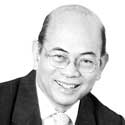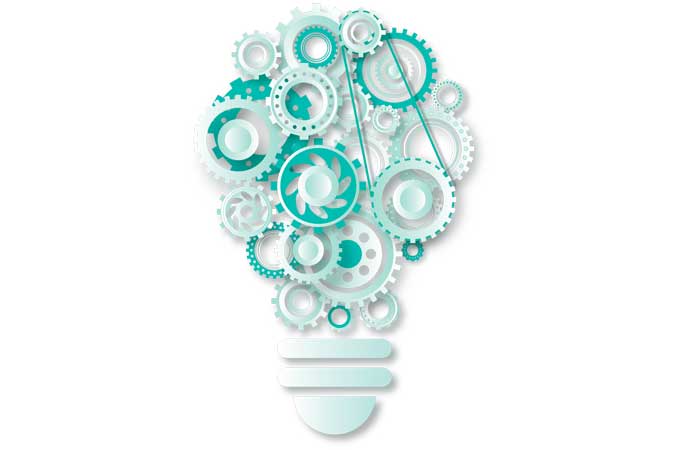
Human Side Of Economics
By Bernardo M. Villegas

Part 4
As we have seen, the Philippine economy is simultaneously undergoing the four industrial revolutions.
The first one (IR1), also known as the Machine Age, improved human productivity with machines. There is still much to be done in the Philippines to improve the productivity of agricultural workers and farmers by the introduction of more mechanized systems of farming, not to mention improving by increased mechanization the productivity of workers in post-harvest, storage, transport, food processing and all the other phases of the supply chain in agribusiness up to the ultimate consumers.
The second revolution (IR2) had to do with the discovery of electricity and assembly line production. There is still much to do to bring electricity to the remote areas of the Philippine archipelago where some of the poorest Filipinos live. It was also during IR2 when Henry Ford (1863-1947) took the idea of mass production from a slaughterhouse in Chicago in which the pigs hung from conveyor belts and each butcher performed only a part of the task of butchering the animal. Ford carried over these principles into automobile production and drastically altered it in the process. While before one station assembled an entire automobile, now the vehicles were produced in partial steps on the conveyor belt, significantly faster and at lower cost. The Philippines has advanced significantly in this stage of IR2 by being part of the global supply chains through manufacturing for exports auto parts and semiconductor devices, among others.
The third industrial revolution (IR3) began in the 1970s through partial automation using memory-programmable controls and computers. Since these technologies were introduced, we have been able to automate an entire production process without human assistance. Examples of this are robots that perform programmed sequences without human intervention. Leading Philippine corporations are beneficiaries of the advances in electronics and the invention and manufacturing of electronic devices such as transistors, memory programmable controls, and computers. In addition, software systems and processes were developed, like Enterprise Resources Planning (ERP), product flow scheduling, and shipping logistics. Supply chain management concept was formalized during this period. These practices are very much in use in the Philippine corporate sector. In fact, one of the sectors that took a quantum leap during the pandemic is logistics or supply chain management.
Today there is a lot of excitement about the fourth industrial revolution (IR4). Also referred to as the age of digitalization, this phase of the industrial revolution is changing the way we connect and exchange information. Powered by information, communication technologies and use of cyber-physical systems, it has introduced the concept of connected devices (the Internet of Things or IoT), cloud computing, additive manufacturing, robotics, augmented reality, smart factories, data analytics, and artificial intelligence technologies to further automate the processes. We see these advances especially applied in our country to the financial sector, logistics, research institutions, and manufacturing. Although IR4 will have limited impact on the biggest economic challenge to our society, which is eradicating mass poverty, we should maximize its use in supporting digital financial inclusion addressed to the close to 70% of our population who are unbanked, especially the 20% who fall below the poverty line.
IR4 is especially relevant to the inclusion initiatives of the Philippine Central Bank (Bangko Sentral ng Pilipinas or BSP). The BSP has put in place the building blocks of an inclusive digital finance ecosystem, namely, 1.) democratized access to a transaction account; 2.) expanded network of low-cost financial touch points; and, 3.) interoperable digital payments. Through the tools made available by IR4, the BSP intends to accomplish the following inclusion initiatives: 1.) Increasing the number of Filipinos with an account by leveraging on compelling use cases; 2.) Enhancing the digital infrastructure to support digital financial inclusion; and, 3.) Promoting access to finance for the agricultural and MSME sectors. Through these initiatives, the BSP hopes to bring 70% of adult Filipinos into the banked population by 2023. It is also targeted that by that year, 50% of transactions, both in terms of volume and value, will be done digitally. Additionally, the Department of Information and Communications Technology (DICT) has also introduced the new framework called CHIP (Connect, Harness, Innovate, and Protect) that seeks to expand the uptake of digital services in mobile payments, telemedicine, and e-commerce. Also significant are efforts of private enterprises to provide digital solutions to small farmers so that they can be in direct online touch with markets about prices of their products, thus freeing themselves from the oligopolistic hold of middlemen.
Another development that is enabled by IR4 is leading to the convergence of the telecom, IT, and media sectors. This trend can do much to help achieve inclusive growth. As Fitch Solutions Country Risk and Industry Research reported recently, government subsidies to about 6 million Filipinos as well as the relatively high mobile penetration rate of 58% in the Philippines will help boost digital transactions and open up opportunities for fintech players. Because broadband is still very limited across the archipelago, players that are part of telecommunication companies like Globe and PLDT have a competitive advantage. For example, Globe Telecom, Inc.’s mobile wallet GCash already has 31 million users, many of them being OFWs (overseas Filipino workers) and their relatives, with transactions surpassing the P1 trillion mark. Predictably, the other strong player in the market is PayMaya, owned by PLDT, Inc., which has 28 million users, with the value of transactions coursed through the platform growing 3.5 times at the end of 2020 from the prior year. Voyager Innovations, also owned by PLDT, has recently moved into adjacent verticals such as providing business loans and health insurance. What Voyager has done is just one step away from digital banking which can do much to address the needs of the unbanked, especially in the rural areas where 75% of the poorest of the poor live and work. As an aside, an example of the convergence of telecom, IT, and mass media — as reported by L.W.T. Noble in this paper (July 9-10) — is the majority ownership by PLDT of BusinessWorld through the Philippine Star group, which it controls.
As the Philippines transition from a low-middle income to an upper-middle income economy in the next three years, it is reasonable that we aspire to be fully integrated into Industrial Revolution 4.0 and avoid the unfortunate experiences of the past during which we literally missed the boat in having our IR1, IR2 and IR3 because of failed economic policies. Our having given short shrift to agricultural and rural development and adopting an inward-looking, import-substitution industrialization strategy prevented us from fully benefiting from the first three industrial revolutions. Before we become overly excited about Artificial Intelligence, the Internet of Things, Big Data, autonomous vehicles, nanotechnology, etc., however, let us have a reality check. Let us make sure that our main objective in using the tools and technology of IR4 will be to liberate our more than 20 million fellow citizens who are still suffering from dehumanizing poverty. That is why, I have given much importance above to a prime example of how IR4 can help both the rural and urban poor have access to financial services through digital banking and similar applications. I am especially appealing to Generation Z or the centennials, born with a smart phone in their hands, to make sure that IR4 will be a means to help to reduce our poverty incidence to zero in their lifetime, as some of our Southeast Asian neighbors have already done.
To be continued.
Bernardo M. Villegas has a Ph.D. in Economics from Harvard, is Professor Emeritus at the University of Asia and the Pacific, and a Visiting Professor at the IESE Business School in Barcelona, Spain. He was a member of the 1986 Constitutional Commission.